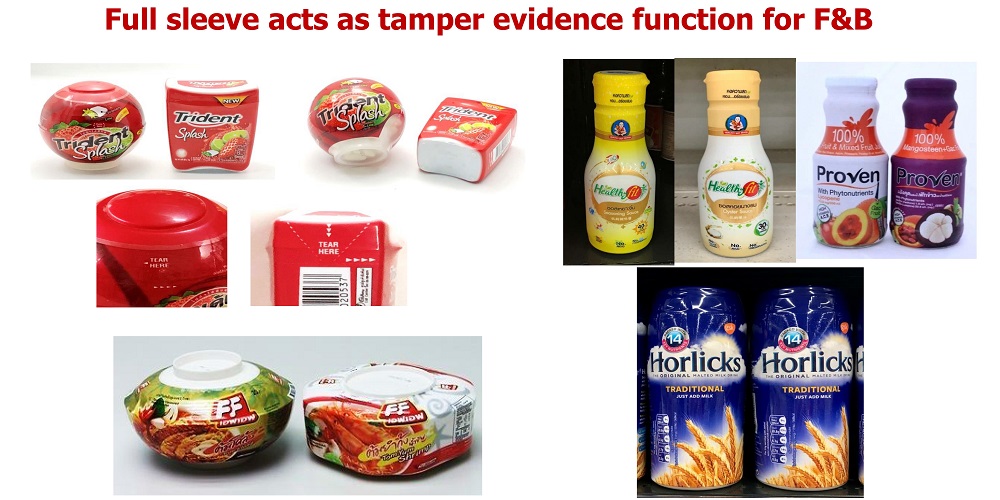COVID-19 is transforming the food and beverage industry, and not simply because of the lockdowns disrupting operations or closing factories, restaurants and stores and consequently pushing down sales. Shifts in demand and buying behaviour among consumers and changes in market and business outlook on the manufacturer side are reshaping the industry almost from the inside out.
In a way, emphasis on basic needs these past months has cushioned the impact of the pandemic and sustained business for F&B manufacturers to some extent. But not all foods and drinks are created equal. Healthy products top buyers’ priorities list driven by the need to boost immunity, shoving other items to the back of the list. The same focus on health and wellness is feeding interest in functional food in Thailand while concerns about sudden lockdowns are spurring demand for ready-to-eat and -drink alternatives. As purse strings require more tightening and uncertainties about the future high on people’s minds, luxury, non-essentials and high-end food and other products will remain at the back burner. Value for money is king and only trusted brands are winning consumer loyalty these trying times.
On the manufacturing side, many players are revamping not only processes but sometimes the entire business model to ride out market challenges. Many are modifying delivery and marketing mechanisms to comply with transport and mobility restrictions yet address customer needs. Some are realigning entire product lines and production processes to match demand shifts, and in some cases the change may not be temporary. Several companies have dropped other product lines to focus on more in-demand items such as healthier foods and drinks with a much longer shelf life for stocking the pantry or ready-to-cook or heat-to-eat items for those working from home and with children taking online classes.
Thailand, a major exporter of food and beverage products worldwide, sees high growth prospects for functional foods, which currently command a very strong local market at 68,000 million baht. The global industry is valued at $180 billion with 5% growth.
Super foods, immune-boosting foods, probiotics and food as medicine are likewise gaining popularity in Thailand. The global health crisis will continue to fuel the trend for health and sustainability, and more health-conscious consumers will seek products that boost their well-being and nourish both the body and mind.

Mayuree Paklamjeak, packaging expert and adviser to the Plastic Institute of Thailand and other companies.
Changing buyer behaviours put spotlight on packaging
As in most countries around the world, part of the new normal in Thailand is the shift to online. The lockdowns accelerated the transition to e-commerce, and with more businesses deploying digital platforms of their own to serve customers and stay afloat, this change may be for the long term. The country’s e-commerce value hit 220,000 million baht in 2020, 35% more than in 2019.
This switch to online, however, is not merely about people changing how they procure items or transact. As more consumers buy more items over the internet and with increasing frequency, their purchasing decision making also gradually evolves: Many now rely mostly on how a product looks on the screens to fill their carts, which puts increased importance on the product’s appearance.
Packaging has become an even more crucial factor in selling and buying a product online. With online users’ short attention span and e-commerce sites offering a wide variety of products and brands, those that stand out most likely make it through the checkout counter.
Indeed, while most industries in Thailand were negatively impacted by the pandemic, the packaging sector experienced growth, with companies pointing to a positive impact in on opinion survey of more than 2,000 converters.
Mayuree Paklamjeak, adviser with the Plastic Institute of Thailand and backed with many years of experience working with consumer product manufacturers, said packaging is a powerful tool in catching an online buyer’s eye and is influential in impulse buying or selling. She added 64% of consumers sometimes purchase products unplanned because of packaging.
Packaging is also increasingly doubling as a marketing and promotional tool on social media as consumers share images of online purchases on their accounts. About 74% of consumers aged 18 to 25 like to share packaging images of purchased items on social media, Mrs Paklamjeak said, and 40% like to share packaging pictures of gifts they received.
Shrink sleeves top choice
Packaging considerations for digital platforms do not vary significantly from those for on-shelf display: Shape, material, colours, label and artwork design all play important roles.
In terms of labels, shrink sleeves are increasingly used by packaging and F&B manufacturers in Thailand over pressure-sensitive and wrap-around alternatives.
Shrink sleeves meet packaging trends and requirements in relation to health and safety, shelf life extension, convenience and even sustainability. The flexibility provided by shrink sleeves enables food and beverage manufacturers to explore new packaging shapes and designs than then help them differentiate their products from the competition. With shrink sleeves actually serving as the surface of the product’s container, they are a prime label real estate for communicating product benefits and other important branding details.
The packaging’s structural design, which comprises materials used and functionality, takes care of the health and safety, shelf life, user convenience and sustainability requirements. Product differentiation and communicating user benefits, however, need graphic design, and this is where shrink sleeves are offering huge advantages.

*Form-fitting shrink sleeve labels work with containers of different pack materials, shapes, and sizes.
Flexible, reliable packaging
One of the fastest-growing segments in the labelling and packaging industry, shrink sleeves are gaining popularity on the back of ease of use, flexibility and reliability. The global stretch and shrink sleeve labels market is forecast by 360 Research Reports to post a CAGR of 3.1% between 2021 and 2026, by which time it will hit US$12,810 million.
Shrink sleeves can be used with a wide range of pack materials and can support different shapes, making them ideal for food and drink products. These form-fitting labels work with containers of any size, allowing F&B manufacturers to broaden the size options they can offer for the same product and so provide buyers with more choices to suit their needs. This has been key to the wider selection of bottle or can shapes and sizes both in physical and online stores for the end-users and more sales revenue sources for the manufacturers.
Packaging multiple items together is likewise made simpler through the use of shrink sleeves. Because they are form-fitting, shrink sleeves can be employed to bundle several items, be they of the same or different size and shape. This is particularly beneficial for marketing efforts such as buy one, take one offers or when selling several items as a single pack.
For F&B manufacturers whose different products come in the same container size, shrink sleeves offer huge cost savings. Companies can use the same container type for all products and vary only the shrink sleeve label to distinguish one brand from the next. Besides the cost efficiency, this enables manufacturers to further streamline the supply chain and process as they would not need to work with more suppliers and raw materials. It can also help reduce wastes in the long term.
Manufacturers using glass bottles for their products can replace screen printing with shrink sleeves. Besides greater potential cost savings, shrink sleeves provide more flexibility in terms of design and providing product information.
In support of the circular economy, sleeves can be removed easily from used packs for recycling. The bottle can then be readily turned over for cleaning and recycling. As for the shrink sleeve substrate, PVC is more commonly used now but greener alternatives are emerging.

*Apart from branding and design, shrink sleeves, especially full sleeves, can serve as a tamper-evident packaging.
Greater design options, tamper-evident sealing
With their 360-degree coverage, shrink sleeves provide greater flexibility in design and enable manufacturers to optimise the printable area. The full-colour and form-fitting attributes of the sleeves let manufacturers explore nontraditional formats and take graphic work a notch higher, perfect for creating eye-catchy, high-quality packaging that stands out and can make the difference between a sale and otherwise.
With a bigger printable area in shrink sleeves, manufacturers can provide more product information and other details required by the regulatory body of the target market or country.
Beyond branding and design, shrink sleeves can serve as a tamper-evident packaging. Full sleeves, in particular, protect products such as beverages. Partial sleeves allow buyers to see-through the product for easier identification such as in the case of drinks that come in different flavours and therefore colours.
Mrs Paklamjeak forecasts more F&B manufacturers in Thailand will adopt shrink sleeves in the coming months to maximise their application benefits and supply advantages.
Thailand hosts a range of sleeve material suppliers, both local and foreign, that can offer F&B manufacturers different material options. There are also many local reliable converters and third-party suppliers capable of providing brand owners with sleeve service.
Mrs Paklamjeak noted, however, that while shrink sleeves are a promising trend, F&B manufacturers need to weigh the benefits and implications. For one, PVC is widely used in Thailand, but this material is banned in other countries so exporting products with PVC-based shrink sleeves might present challenges. Manufacturers considering other materials such as PET need to evaluate the cost impact.
Collaboration amongst the different stakeholders in the value chain will be very important, she said. “Food manufacturers and brand owners need to work closely together with packaging manufacturers and raw material and machine suppliers at the onset. Packaging manufacturers will also need to coordinate with both the brand owners and suppliers in order to succeed.”
*Images are taken from Mayuree Paklamjeak's presentation on "Shrink Sleeve Trends for Food, Beverages, and Personal Care in Thailand", which she presented at the Ringier Events online webinar, Shrink Sleeve Innovations for Food, Beverages, and Personal Care Products, held on May 27, 2021.

 iConnectHub
iConnectHub
 Login/Register
Login/Register Supplier Login
Supplier Login


























